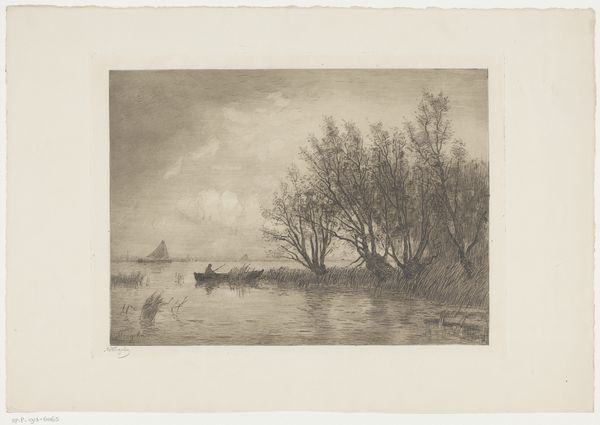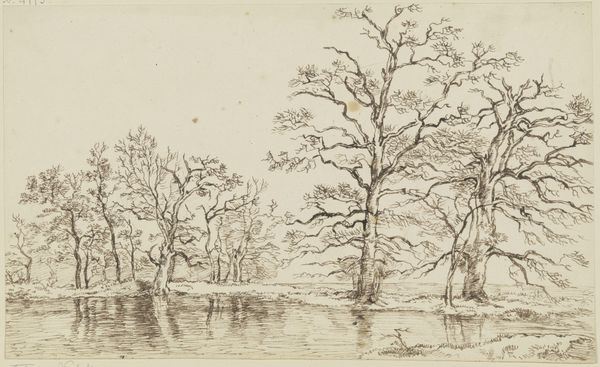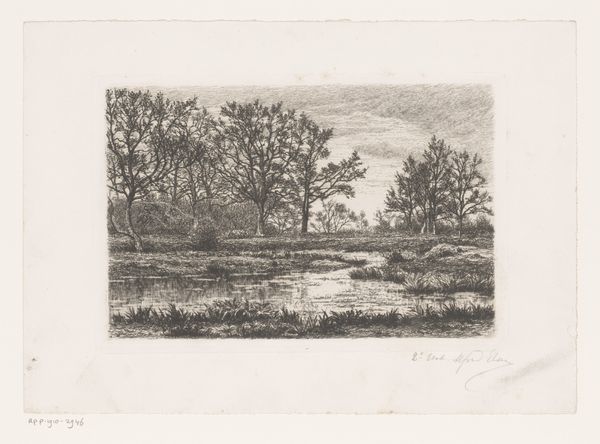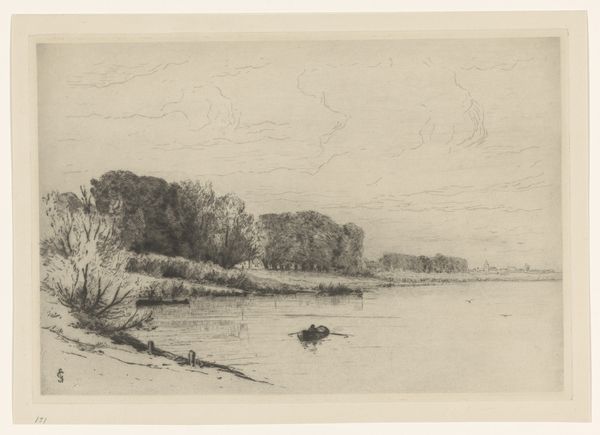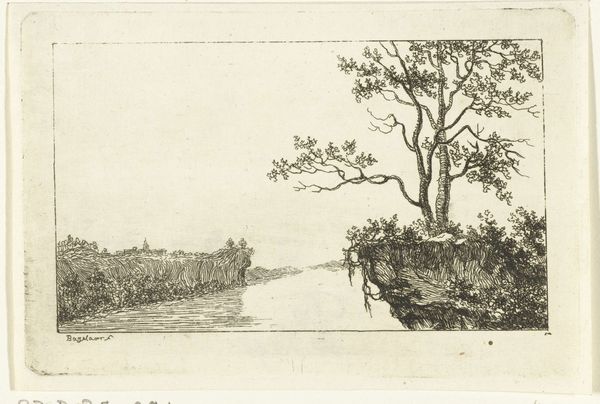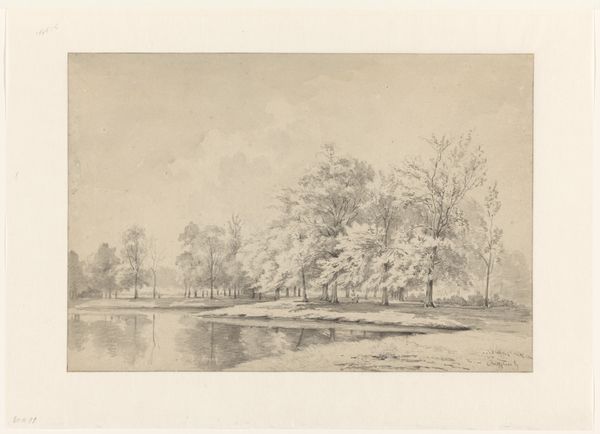
drawing, print, etching, ink, pencil
#
drawing
# print
#
etching
#
landscape
#
ink
#
pencil
#
realism
Dimensions: height 466 mm, width 634 mm
Copyright: Rijks Museum: Open Domain
Curator: Here we have Alphonse Stengelin's "Oaks and Birches by a Pool," an etching created sometime between 1876 and 1910. The materials consist of ink and pencil applied using printmaking techniques. Editor: My first impression is a certain stillness. The monochrome palette and the detailed linework evoke a very tranquil, almost melancholic mood. It is evocative of the industrialization period and suggests resistance through its subject. Curator: Indeed. Stengelin, in this scene, focuses his meticulous craft on depicting the details of trees and water, presenting nature with an objective lens. What do you make of this realism in its specific context? Editor: Considering this piece arose in the late 19th century, a time when industrial processes reshaped labor, I find its dedication to natural minutiae very pointed. It highlights what industrialization threatens: an intimacy with our environment. Curator: Stengelin’s technique mirrors the tension inherent in the social dynamics of his time. Etching, with its reproducible quality, existed in a realm somewhere between industry and fine art production. Editor: I'm particularly struck by how the absence of people invites the viewer to reflect on humanity’s relationship with this scene. How the extraction of resources often happens away from our field of vision. The materiality here is an allegory of society, isn’t it? Curator: Perhaps. We see a carefully manufactured image, using industrial tools of reproduction, pointing towards preservation. And Stengelin isn’t overtly critical; he is rather, documenting through material exploration and print. Editor: Absolutely, and by inviting such quiet introspection, the work prompts deeper inquiries into land usage, the displacement of communities, and even capitalist ventures of the era. Curator: It is true, analyzing Stengelin's process underscores this print as an instrument. Thank you, I feel this closer examination provides ample food for further exploration of late 19th-century society. Editor: Indeed. I think reflecting upon landscape pieces such as this within today’s frame pushes the discourse towards vital conversations about preservation and environmental consciousness.
Comments
No comments
Be the first to comment and join the conversation on the ultimate creative platform.
